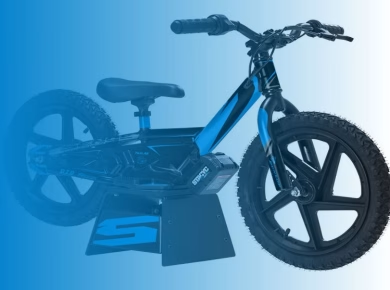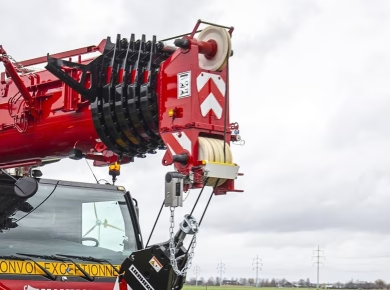When it comes to organizing tools and equipment, a metal tool box is often the unsung hero of any workshop or garage. These sturdy containers not only provide reliable storage solutions but also protect valuable tools from damage and loss. With so many options on the market, choosing the right metal tool box can feel overwhelming. This article dives deep into various metal tool boxes, comparing their durability, design features, and usability, ultimately helping you find the perfect solution for your storage needs.
The Importance of Choosing the Right Tool Box
Selecting a tool box isn’t just about convenience; it’s an investment in the longevity of your tools. A quality metal tool box can withstand harsh environments, whether it’s the humidity of a garage or the dust of a construction site. Moreover, a well-organized tool box saves time and increases productivity. Imagine reaching for a tool and knowing exactly where it is—no more digging through a pile of mismatched items.
Key Features to Consider
Before diving into specific comparisons, it’s crucial to understand the features that make a metal tool box stand out. Durability is paramount; look for heavy-gauge steel and rust-resistant finishes. Additionally, consider the size and weight. A larger box may hold more tools, but it’s essential to weigh that against portability, especially if you need to move it frequently.
Another important aspect is security. A good metal tool box should have reliable locking mechanisms. This protects not only your tools but also prevents unauthorized access. Finally, think about organization features. Removable trays, dividers, and compartments can transform a chaotic tool space into a model of efficiency.
Comparative Analysis of Popular Metal Tool Boxes
Now that we have a grasp of the essential features, let’s look at some of the most popular metal tool boxes on the market today.
1. Husky 52 in. Heavy Duty Tool Box
The Husky Heavy Duty Tool Box is a favorite among professionals and DIY enthusiasts alike. With a robust construction that can withstand the rigors of daily use, this tool box offers ample storage space. It features a powder-coated finish, enhancing its resistance to scratches and rust.
One of its standout features is the built-in latch system, which provides security while maintaining ease of access. Users appreciate the spacious interior, which can accommodate a variety of tools, from hand tools to power equipment. However, some users have noted that its weight can be a drawback if frequent transport is necessary.
2. DEWALT 24 in. Structural Foam Tool Box
While the DEWALT box is constructed from structural foam, it has a metal latch and a sturdy design that rivals metal options. This tool box is particularly appealing for those who prioritize lightweight solutions without sacrificing durability. Its unique design allows for excellent organization, featuring multiple compartments and removable trays.
The DEWALT box’s water-resistant design is another highlight, making it suitable for outdoor use. However, it may not be as rugged as its all-metal counterparts, which could be a concern for those working in particularly harsh environments.
3. Craftsman 3-Drawer Metal Tool Chest
For those looking for an organized storage solution, the Craftsman 3-Drawer Metal Tool Chest is hard to beat. This tool box combines the classic metal construction with modern organizational features. Each drawer is ball-bearing, allowing for smooth operation, and the chest itself has a powder-coated finish for added durability.
While the Craftsman tool chest is designed to sit on a workbench or be used as a mobile tool box, its weight may limit portability. Still, the organized drawers make it easier to find tools quickly, ultimately enhancing your workflow.
4. Stanley 28 in. Metal Tool Box
The Stanley Metal Tool Box is a more budget-friendly option that doesn’t skimp on quality. With a simple design and sturdy construction, it’s perfect for the casual user or those just starting to build their tool collection. It features a removable tray for smaller tools, keeping everything neatly organized.
However, some users have expressed concerns about the locking mechanism, claiming it could be more secure. Still, for its price point, the Stanley offers excellent value.
Evaluating Durability and Longevity
Durability is perhaps the most crucial factor when selecting a metal tool box. You want a product that can withstand the test of time. Steel is the most common material used, but not all steel is created equal. Look for tool boxes made from heavy-gauge steel, which is less likely to dent or warp under pressure.
Additionally, consider the finish. A powder-coated finish not only provides an attractive appearance but also offers excellent resistance against rust and corrosion. For those who work in particularly challenging environments, some manufacturers offer tool boxes with additional coatings designed to withstand extreme conditions.
Real-World User Experiences
It’s one thing to read about features and specifications, but real-world experiences can provide invaluable insights. Many users have highlighted the importance of organization in their tool boxes. The ability to customize storage with removable trays or compartments can make a significant difference in usability.
One user shared their experience with the Husky box, noting how the spacious design allowed them to store not just tools but also small parts and accessories. They appreciated that everything had its place, reducing the time spent searching for needed items.
Conversely, a user of the Craftsman tool chest mentioned how the ball-bearing drawers made accessing tools easier, especially during busy projects. However, they also noted that the weight of the chest meant it wasn’t easily portable, which could be a downside for some.
Portability vs. Stability
When considering a metal tool box, think about where it will be used. If you need to transport your tools frequently, you might prioritize portability over sheer storage capacity. In such cases, a lighter option like the DEWALT structural foam tool box could be ideal, as it balances weight with durability.
On the other hand, if your tools are primarily stored in a stationary location, a heavier, more stable option like the Craftsman tool chest may be better suited to your needs. Ultimately, your specific use case should guide your decision.
Final Thoughts and Recommendations
Choosing the right metal tool box involves balancing various factors, including durability, organization, and portability. Each of the options discussed above has its strengths and weaknesses. If you need a heavy-duty option that can handle daily wear and tear, the Husky Heavy Duty Tool Box stands out as a top choice. For those seeking lightweight alternatives, the DEWALT structural foam box offers great versatility.
Ultimately, the best tool box for you depends on your unique needs and how you plan to use it. Whether you’re a professional tradesperson or a DIY enthusiast, investing in a quality metal tool box will streamline your workflow and enhance your tool management.
In conclusion, take your time weighing the pros and cons of each option. With the right metal tool box, you’ll not only keep your tools safe but also create a more organized and efficient workspace. Happy organizing!


